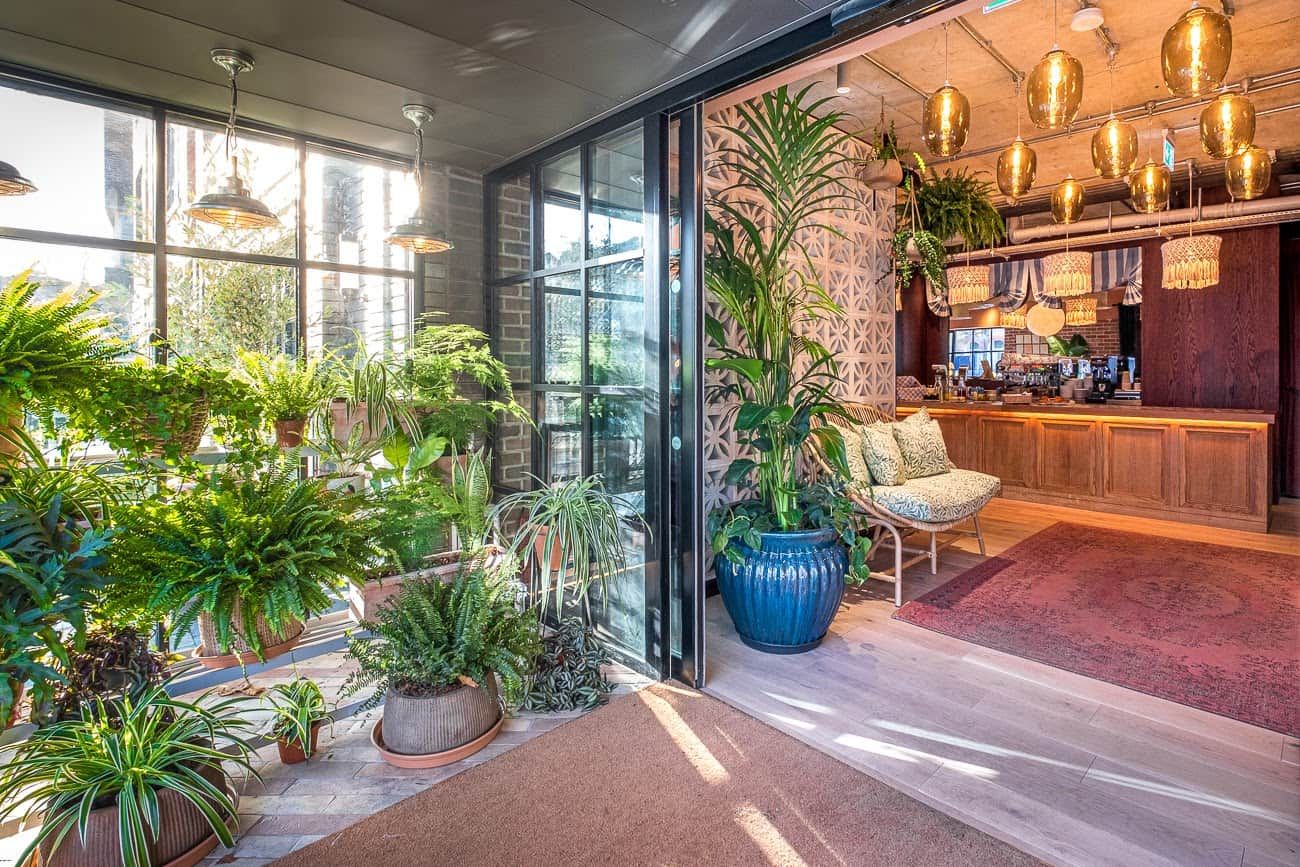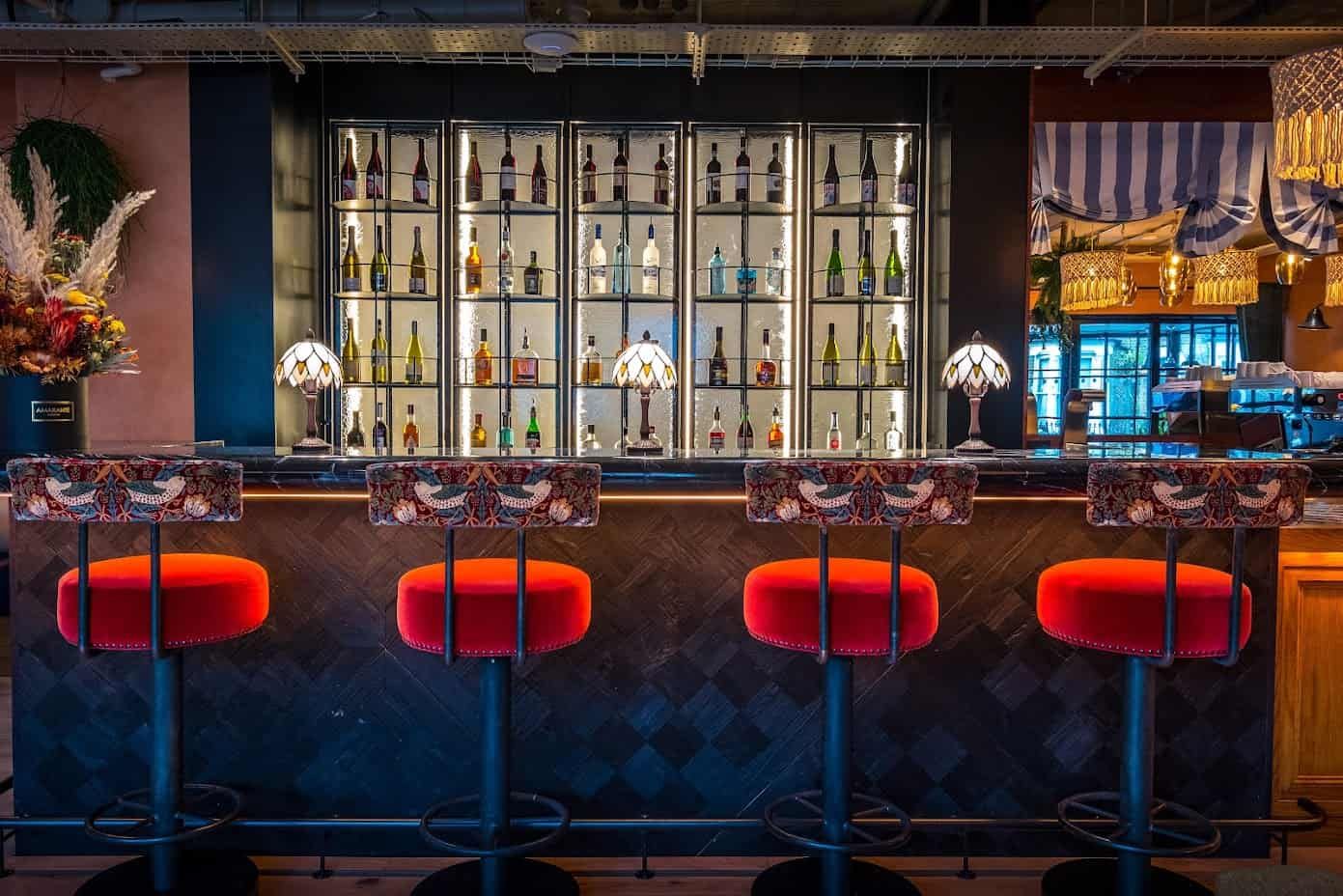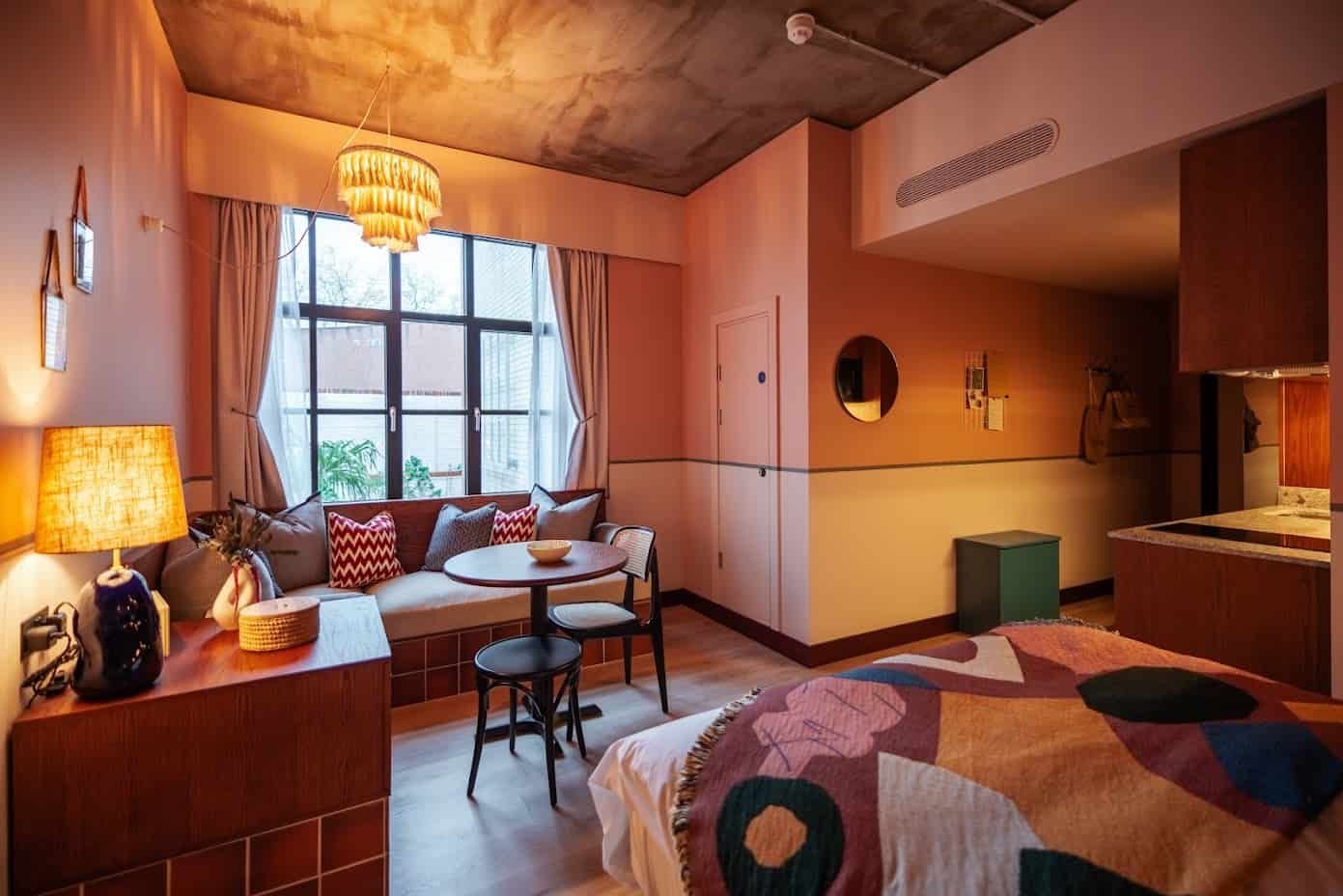Chiswick is a very desirable corner of London, and as such has become one of the favoured places to live for well-heeled professionals and other fortunate residents. It is easy to see why; The area contains Hogarth’s House, the former residence of the 18th-century English artist William Hogarth; Chiswick House, a neo-Palladian villa regarded as one of the finest in England; and Fuller’s Brewery, London’s largest and oldest brewery. It abuts a meander of the north bank of the River Thames and has beautiful parks and walks. It also has that middle-class essential – a branch of Soho House – and enough restaurants, bars and organic food shops for anyone. It is, in short, a thoroughly nice part of London. Usefully, it is also well connected by the District and Piccadilly lines to central London, with the tube taking about a quarter of an hour into the centre.
All of which has made it about the perfect location for a branch of room2, an embryonic chain launched by the Lamington Group, an independent family-owned real estate investment and development company and which is itself based in West London. The Lamington Group describe the Room2 properties as hometels, which does give a clue as to what they are trying to achieve. They are the brainchild of brothers Robert and Stuart Godwin, former members of the British Olympic Development Sailing team, and their concept of hometels is to try to combine the best elements from Airbnb, serviced apartments and boutique hotels and those seeking alternative forms of residential accommodation.

Room2 also encourages guests to embrace a sustainable lifestyle, and they claim to set a new global industry standard for environmental responsibility in the fight against climate change while proving that sustainability doesn’t mean sacrificing style, convenience or comfort. In more specific terms that means using 89 per cent less energy per m2 compared to typical UK hotels, and being the first hotel in the world to fully account for its entire carbon footprint, making it ‘whole life net zero’. Being whole life net zero, means both embodied and operational carbon have, and will be, rebalanced throughout the entire hometel’s lifecycle.
That is quite an ambition: to be a boutique, yet a proper hotel; reasonably priced for tourists yet able to meet the needs of corporate clients; and to be environmentally friendly while being as luxurious and comfortable as guests expect. Do they succeed?
Well, first off the design and feel. While the exterior is best described as functional and discrete, inside it really is rather wonderfully decorated, as the photos hopefully show. Plants envelop the entrance (some hint there methinks) and in front is a reception area. To the left a surprisingly stylish bar and then various tables and seating. Although there is a (very good) breakfast, there is no on-site restaurant – honestly superfluous in this area given the multitude of offerings from the usual chains to legends such as La Trompette, and for those in need of some spice the really excellent Annapurna. The excellent staff will help arrange food delivery if needed, and the space makes for a relaxed place to drink, eat, read or work. And quite a bit of the latter takes place in the afternoon. I certainly did.

To the rooms then. I was lucky to stay in one of the top-floor junior suites, which was very cool indeed. Huge loft-style windows affording a Marie Poppins view back East to the centre of town. A comfortable sofa, a useable mini kitchen and then a bedroom area with the all-important large, comfortable, soporific bed into which I just sunk. Great TVs and all the plugs and sockets you could wish for, and a great bathroom with a huge shower left by a distant roof portal. It was all also very thoughtfully decorated – the right sort of modern style with 1930s fixtures that you find in, well, boutique hotels. A great room. The other options also looked very good, with even the smallest of rooms providing somewhere you could swing some seriously leggy cats and having a very warming, comforting but cool vibe.

Then the staff. Albeit, they did not come across like hotel staff. No flunkeys here, and at first I mistook most of them for fellow guests. Which is quite a neat trick, and I suspect harder to pull off than it seems. They were super helpful – checking me in at a laptop, explaining everything, suggesting and providing a warming drink and throughout the stay were always there without ever being There, if you get my meaning.
After a supper nearby, my plans of an early night were scuppered by a call to Soho to settle urgent and important questions about the relative merits of certain rums. I was there in no time, had a great evening, and when I left it was a short walk of a few minutes either side of a pleasant tube journey before I was tucked up in that oh-so-comfortable bed and thanking management for the bottles of (eco-friendly) water placed in the fridge for just such an emergency.
So it’s a very good place to stay, meets all the environmental needs while proving that you can do so without anyone noticing. And then the punchline. You can book a room here for as little as £179 a night. For somewhere cool, in a great neighbourhood on the edge of central London. In the world of £1,000+ a night hotel room in Mayfair this is properly value for money. And that is an achievement all of its own. Next time friends are in town this is on my list of places to send them.
Related: Inside Glasgow’s best hotel room

